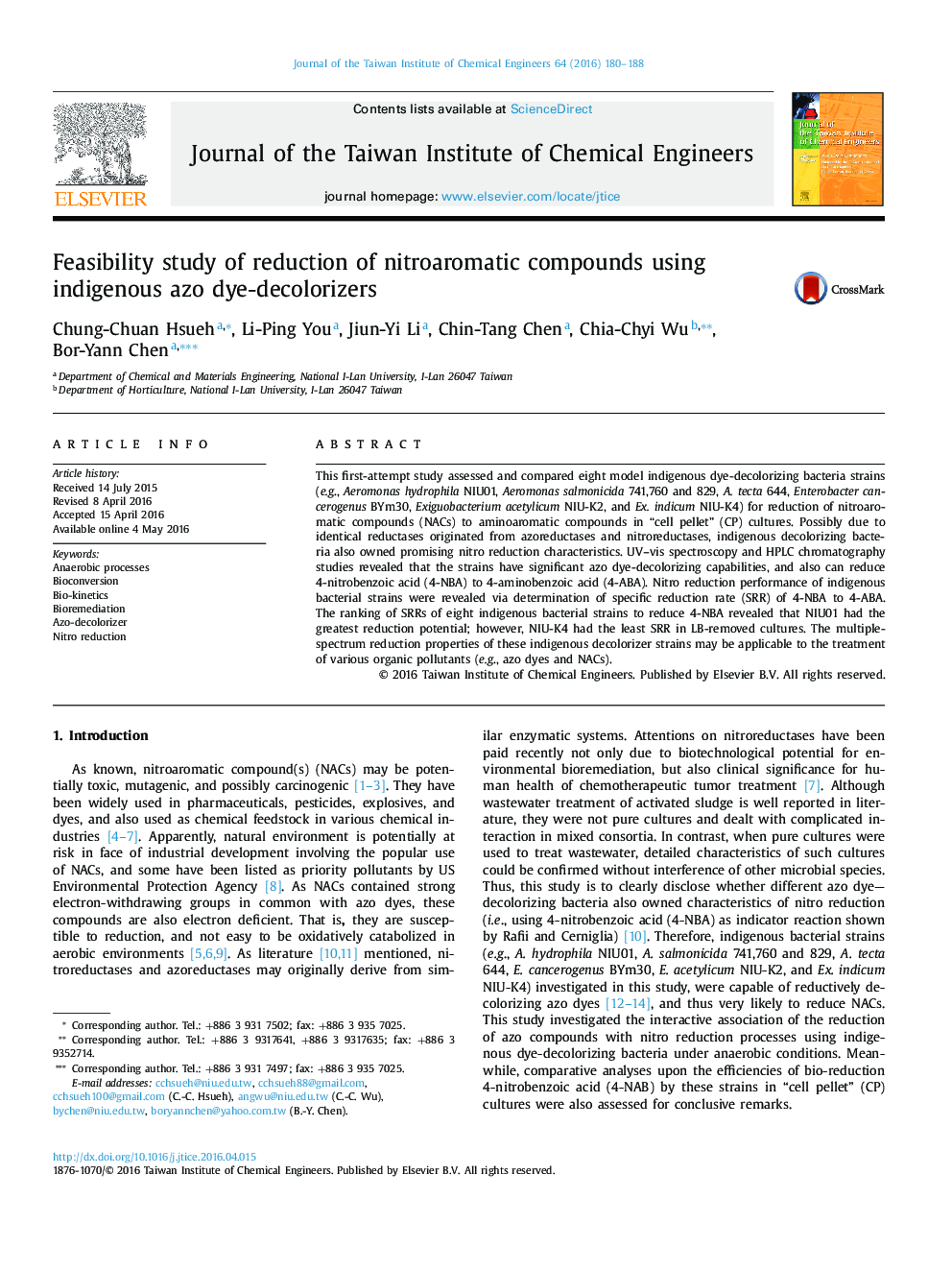| کد مقاله | کد نشریه | سال انتشار | مقاله انگلیسی | نسخه تمام متن |
|---|---|---|---|---|
| 690279 | 1460410 | 2016 | 9 صفحه PDF | دانلود رایگان |
• Explores indigenous azo dye-decolorizing bacteria with capabilities to reduce 4-nitrobenzoic acid.
• Discloses enzymatic association of azo reduction with nitro reduction.
• Confirms anaerobic nitro bioreduction of 4-nitrobenzoic acid to 4-aminobenzoic acid.
This first-attempt study assessed and compared eight model indigenous dye-decolorizing bacteria strains (e.g., Aeromonas hydrophila NIU01, Aeromonas salmonicida 741,760 and 829, A. tecta 644, Enterobacter cancerogenus BYm30, Exiguobacterium acetylicum NIU-K2, and Ex. indicum NIU-K4) for reduction of nitroaromatic compounds (NACs) to aminoaromatic compounds in “cell pellet” (CP) cultures. Possibly due to identical reductases originated from azoreductases and nitroreductases, indigenous decolorizing bacteria also owned promising nitro reduction characteristics. UV–vis spectroscopy and HPLC chromatography studies revealed that the strains have significant azo dye-decolorizing capabilities, and also can reduce 4-nitrobenzoic acid (4-NBA) to 4-aminobenzoic acid (4-ABA). Nitro reduction performance of indigenous bacterial strains were revealed via determination of specific reduction rate (SRR) of 4-NBA to 4-ABA. The ranking of SRRs of eight indigenous bacterial strains to reduce 4-NBA revealed that NIU01 had the greatest reduction potential; however, NIU-K4 had the least SRR in LB-removed cultures. The multiple-spectrum reduction properties of these indigenous decolorizer strains may be applicable to the treatment of various organic pollutants (e.g., azo dyes and NACs).
Figure optionsDownload as PowerPoint slide
Journal: Journal of the Taiwan Institute of Chemical Engineers - Volume 64, July 2016, Pages 180–188
